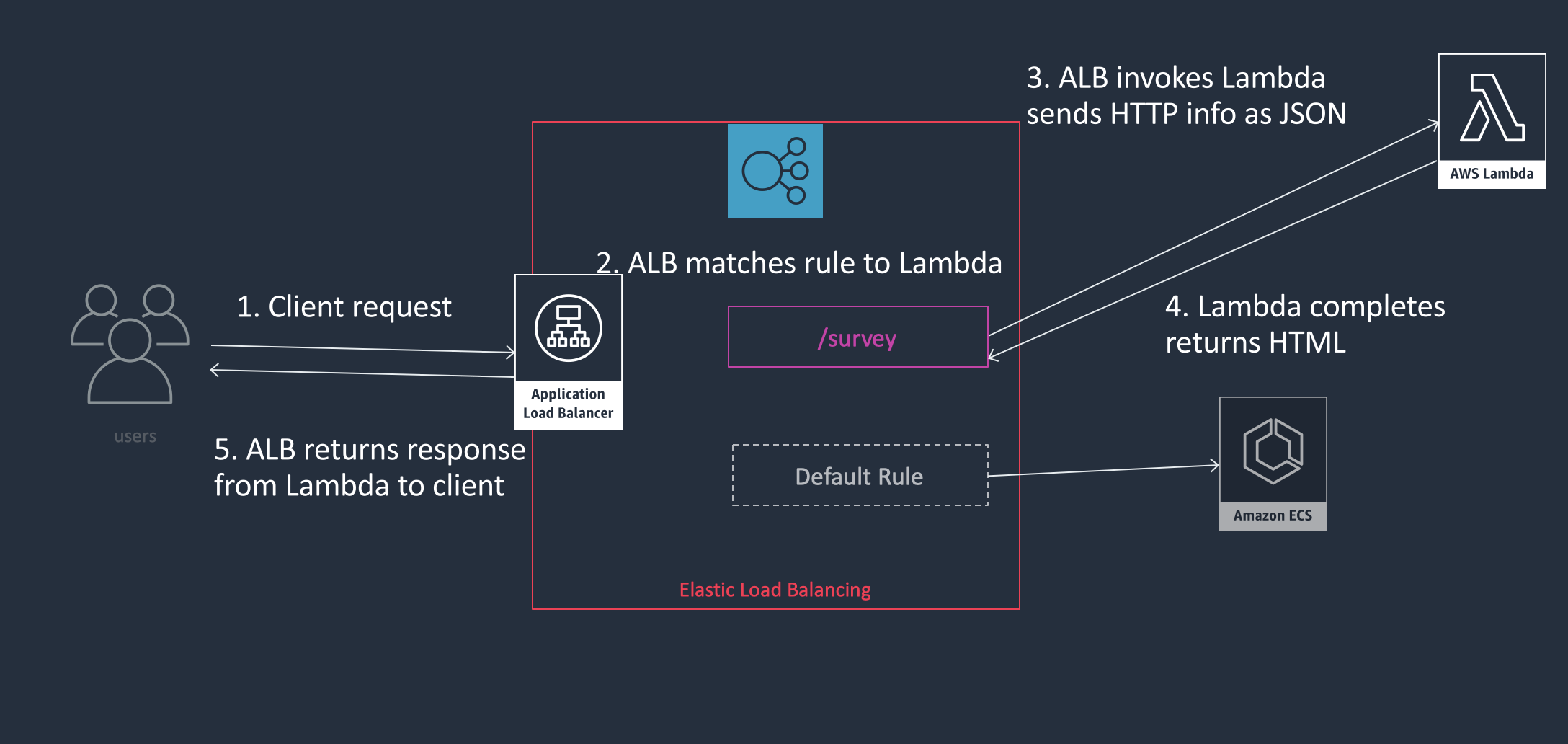
Lambda on
Application Load Balancer

Application Load Balancer (ALB) can now trigger AWS Lambda functions to serve HTTP/HTTPS requests enabling users to access serverless applications.
Application Load Balancer now provides you a single HTTP endpoint for all requests whether they are served from EC2, containers, on-prem servers or Lambda functions.
With the Application Load Balancers’ support for content-based routing rules, you can also route requests to different Lambda functions based on the request content.
Prior to this launch, you could only use EC2 instances, containers, and on-premises servers, as targets for Application Load Balancers, and you needed other proxy solutions to invoke Lambda functions over HTTP(S).
You can now use an Application Load Balancer as a common HTTP endpoint to simplify operations and monitoring for applications that use servers and serverless computing.
Read more about using Lambda as a target in the Elastic Load Balancing documentation.
Overview:

ALB invoking AWS Lambda Process:
- ALB receives client request that matches rules to forward to Lambda function.
- ALB invokes Lambda function, sending the incoming data in JSON format.
- Lambda function performs task, returns HTTP response to ALB
- ALB routes response to client
Additional Resources: